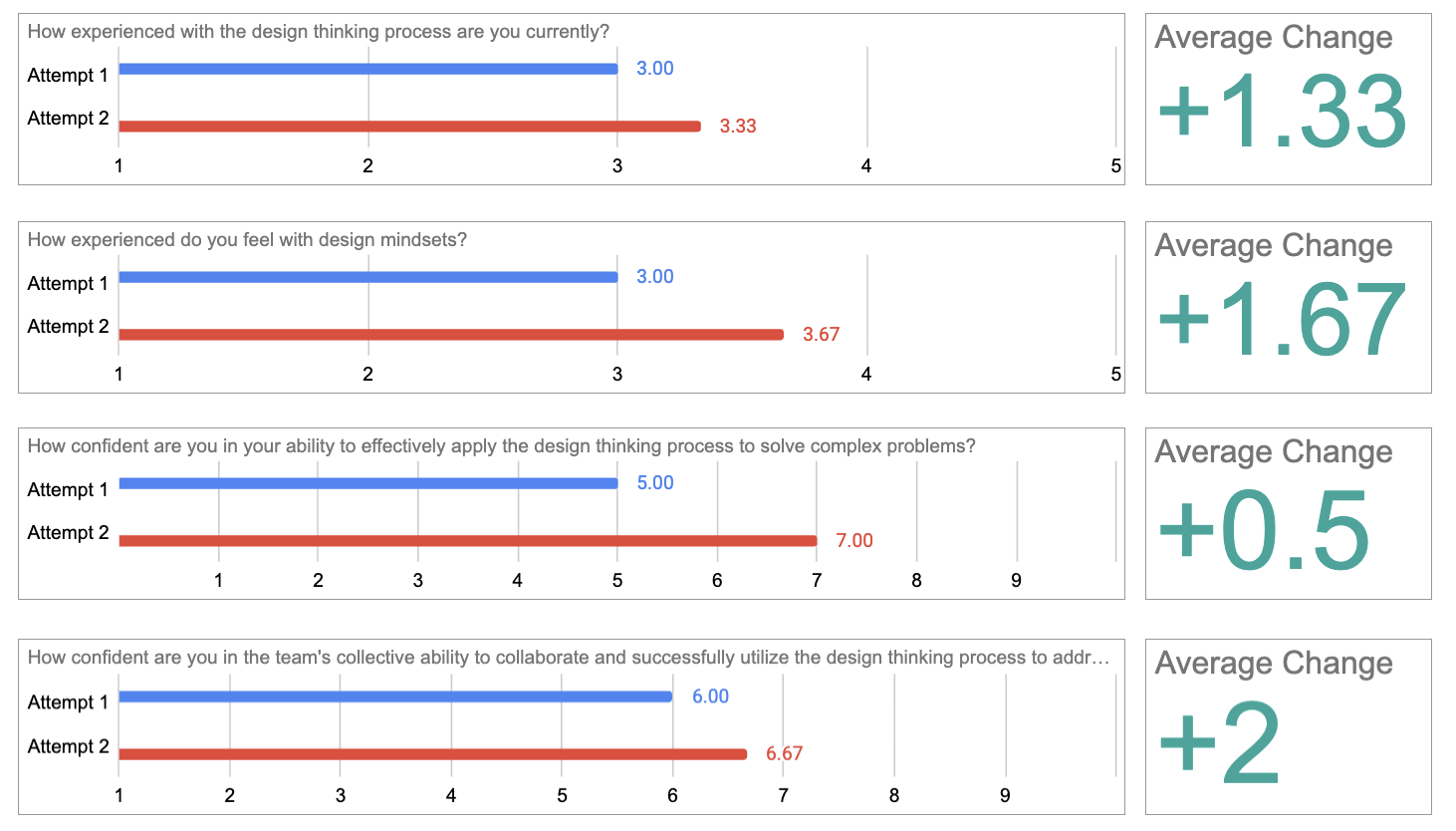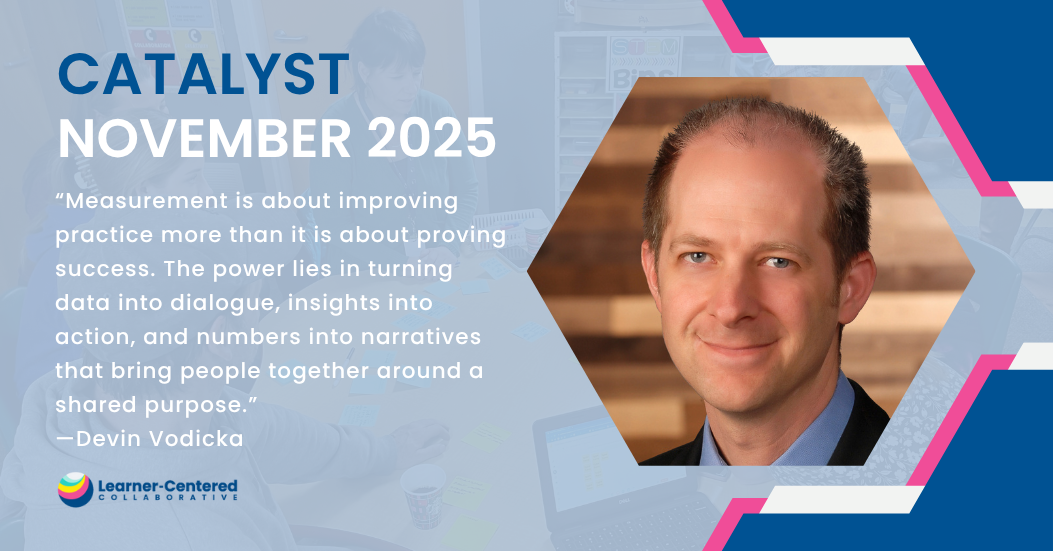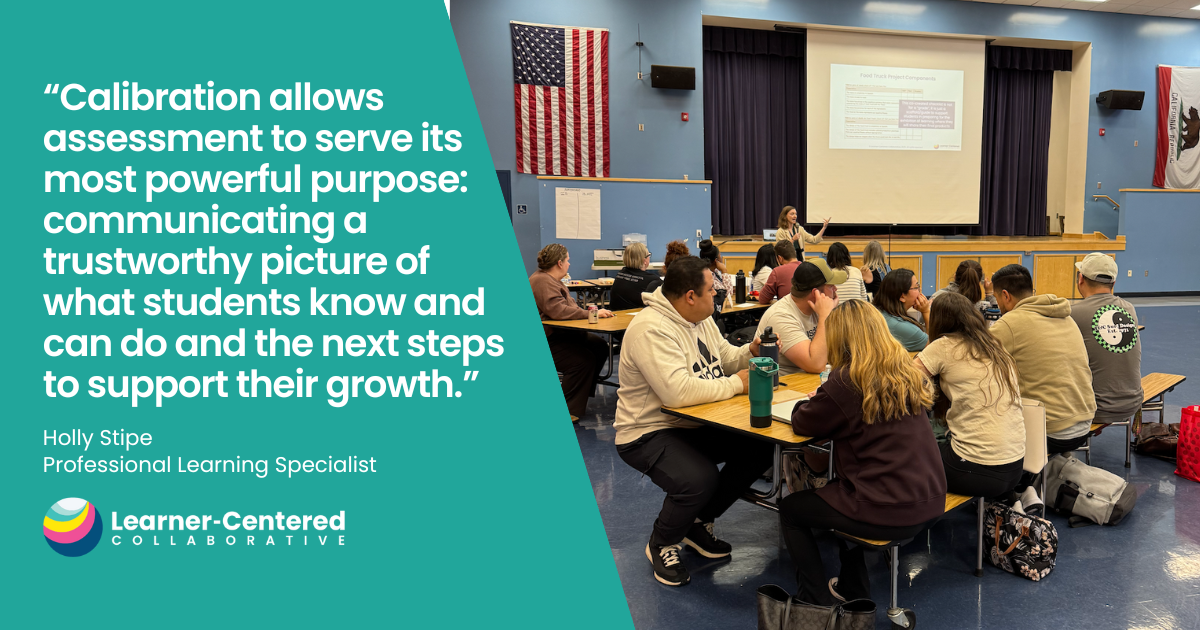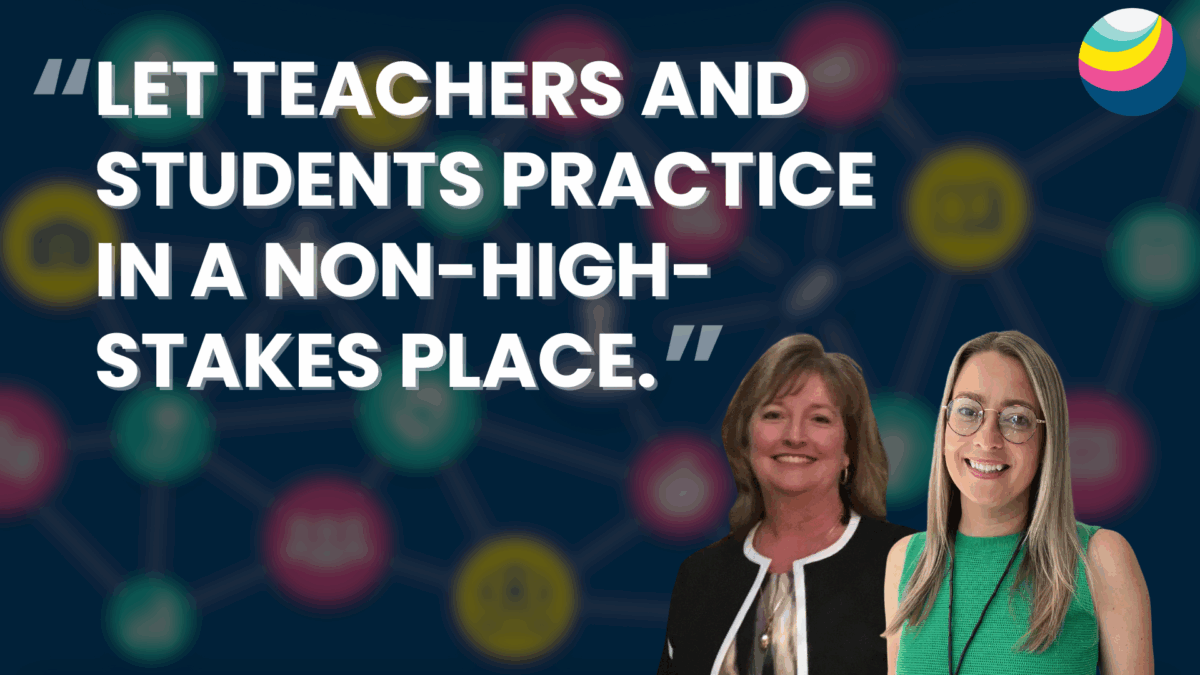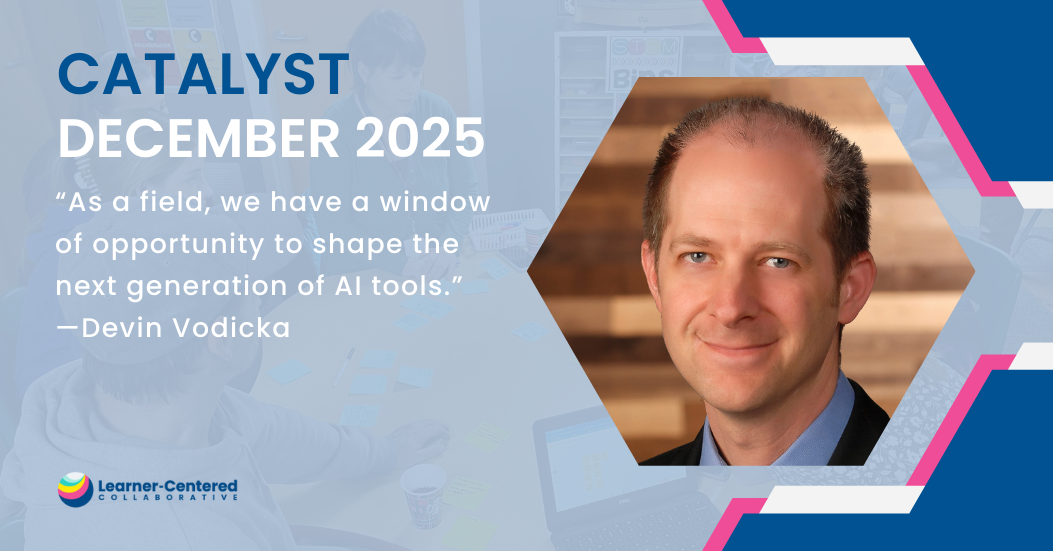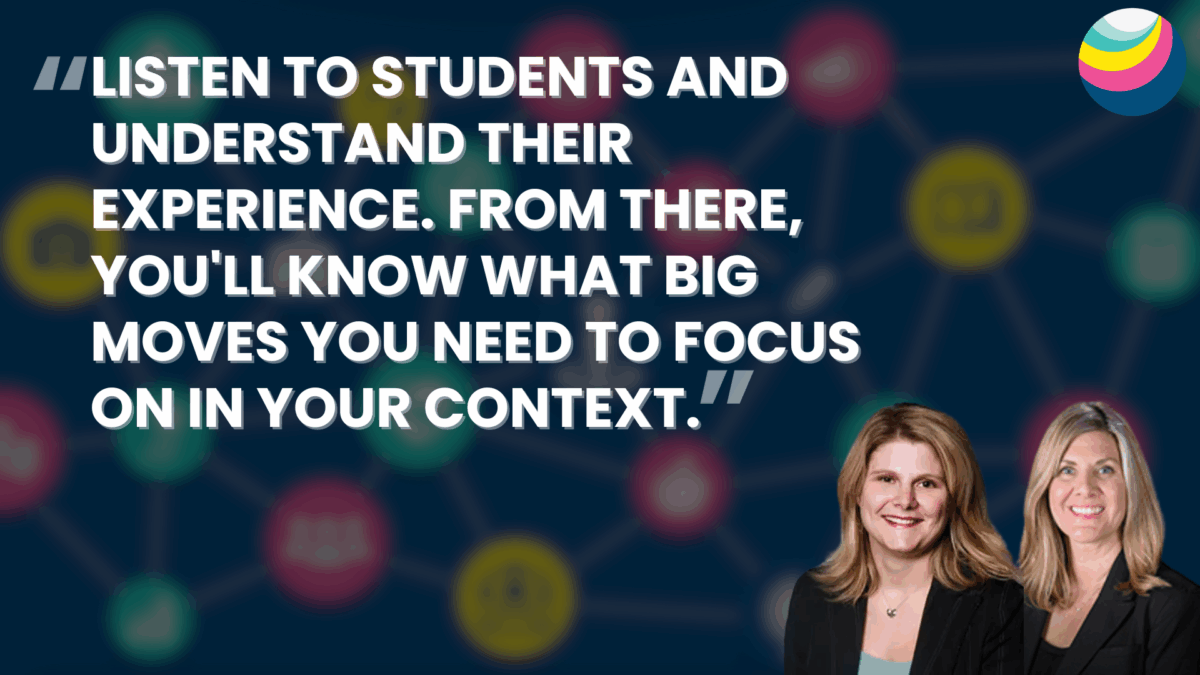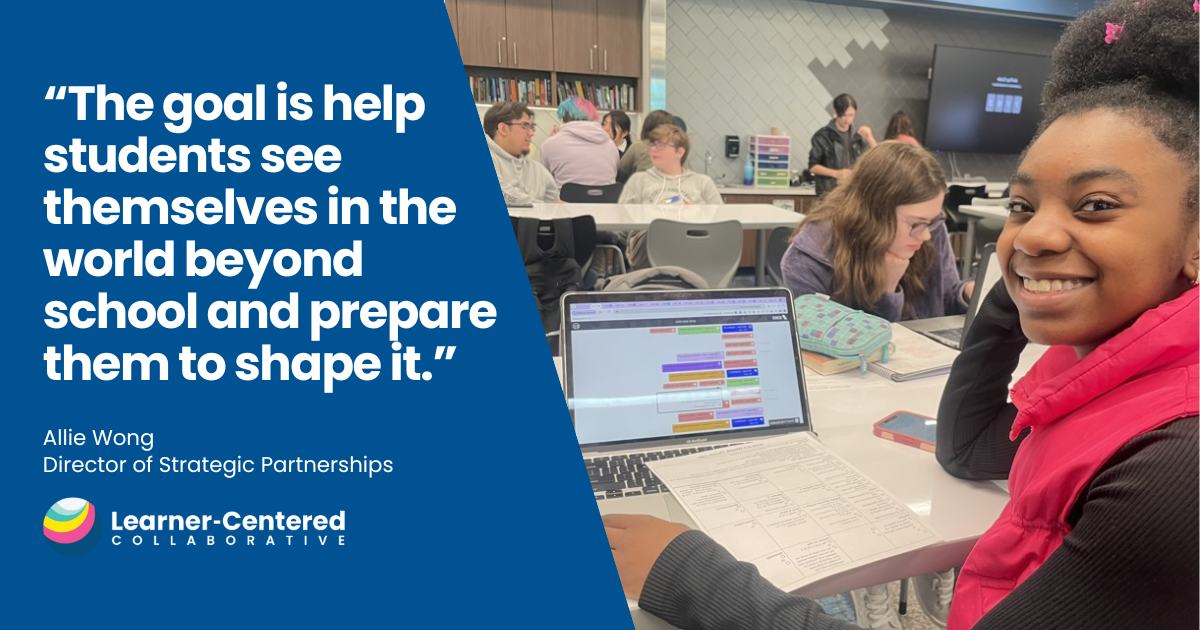Measuring Impact: How Surveys Promote Learner-Centered Change
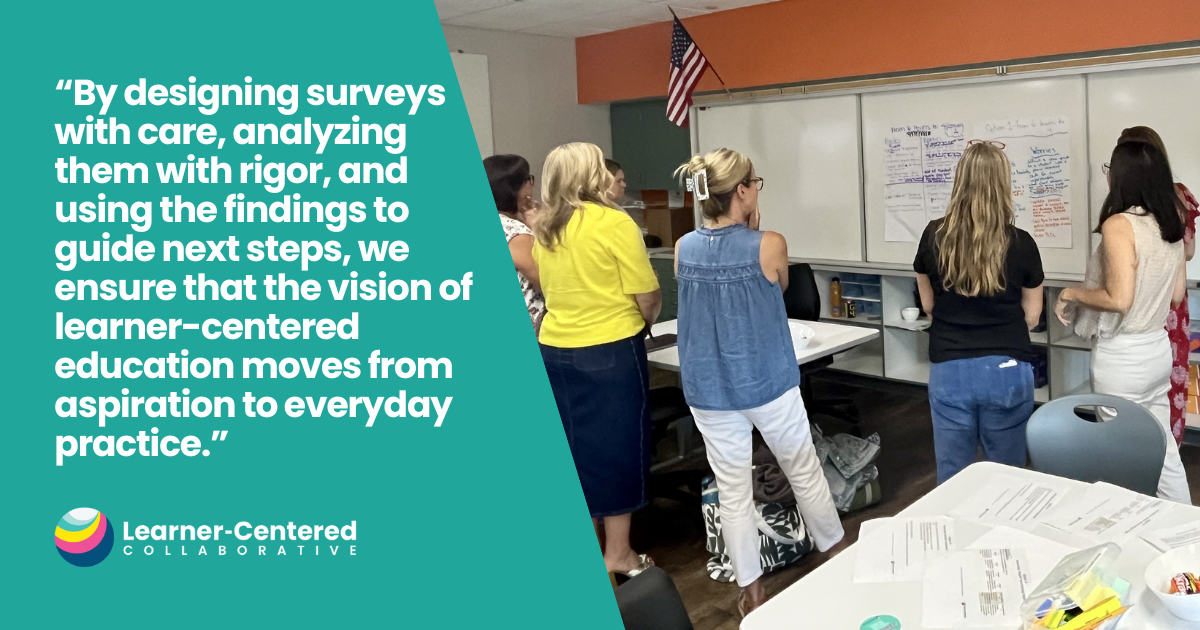
Measuring what matters and listening to learners, educators and community members are cornerstones of our work at Learner-Centered Collaborative, and in any learner-centered ecosystem.
From feedback surveys in our workshops and sessions to more robust, research-backed survey processes with partners to measure specific outcomes, we have been leveraging surveys for years to help schools and districts measure what matters, identifying both bright spots of learner-centered change and opportunities for better communication and deepening practice.
Surveys are powerful not just because they gather feedback, but because they make visible what often goes unseen, and they provide reliable data to understand whether our practices are truly aligning with our values.
Just as important, surveys become a catalyst for action. They provide leaders with actionable insights that help celebrate what’s working, uncover areas for growth, and guide concrete next steps, making continuous improvement part of the culture.
The following survey projects highlight how we have supported schools and districts in measuring the impact of learner-centered efforts and determining next steps, as well as some lessons learned that can be applied to any context.
Micro-Surveys
Each initiative we take on with a partner has a specific goal, and in order to measure impact and progress towards that goal, we leverage surveys. In Colorado Springs’ District 11, a key goal of our work has been to grow Design Lab participants’ familiarity and comfort with leading Design Thinking exercises within their context.
Using a simple four-question survey, participants in the Design Lab identified their level of experience with design thinking processes and mindsets, as well as their confidence in applying those to solve complex problems at the very start of the initiative.
When participants took the survey again nine months after participating in Design Lab sessions and working through real design challenges in the district together, incredible growth was seen in both the experience and comfort level of participants. Data like this points to a positive impact of the Design Lab work and shows progress towards the district’s goals of starting the Design Lab.
Impact Surveys
Learner-Centered Collaborative has developed a comprehensive Impact Survey that measures:
- Learner-Centered Learning Experiences: Considers student and teacher perception of the classroom community and whether their learning experiences are personalized, competency-based and authentic
- Enabling Conditions: Measures teacher, leader, classified staff and family member perception of the coherence, commitment, aligned systems, growth and development, partnerships and culture of the district
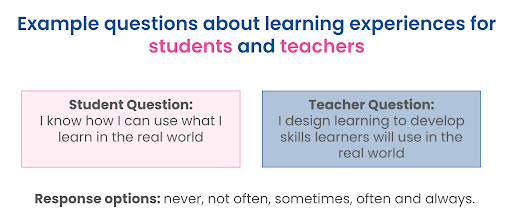
The learning experience items in the student survey were validated by research done in partnership with a Harvard PhD student, Juan Cruz, through a research fellowship with Digital Promise and Learner-Centered Collaborative.
The enabling conditions items for teachers, leaders, classified staff and family members were developed in partnership with Dr. Alan Daly, a professor in the Department of Education Studies at the University of California, San Diego. These research-backed items support leaders in identifying bright spots of learner-centered implementation and determining next steps.
To make data from these surveys visible to districts, Learner-Centered Collaborative provides a comprehensive dashboard for leaders. The dashboard supports districts to unpack data across these items, filtering for different audiences, school sites, grade levels and more. In addition to aggregated data, leaders can drill down to specific questions and analyze how different audiences responded.
The data sparks meaningful conversations and helps leaders focus on what matters most: creating learner-centered learning experiences and supporting the entire system with the enabling conditions in service of learners building the skills in their Portrait of a Learner.

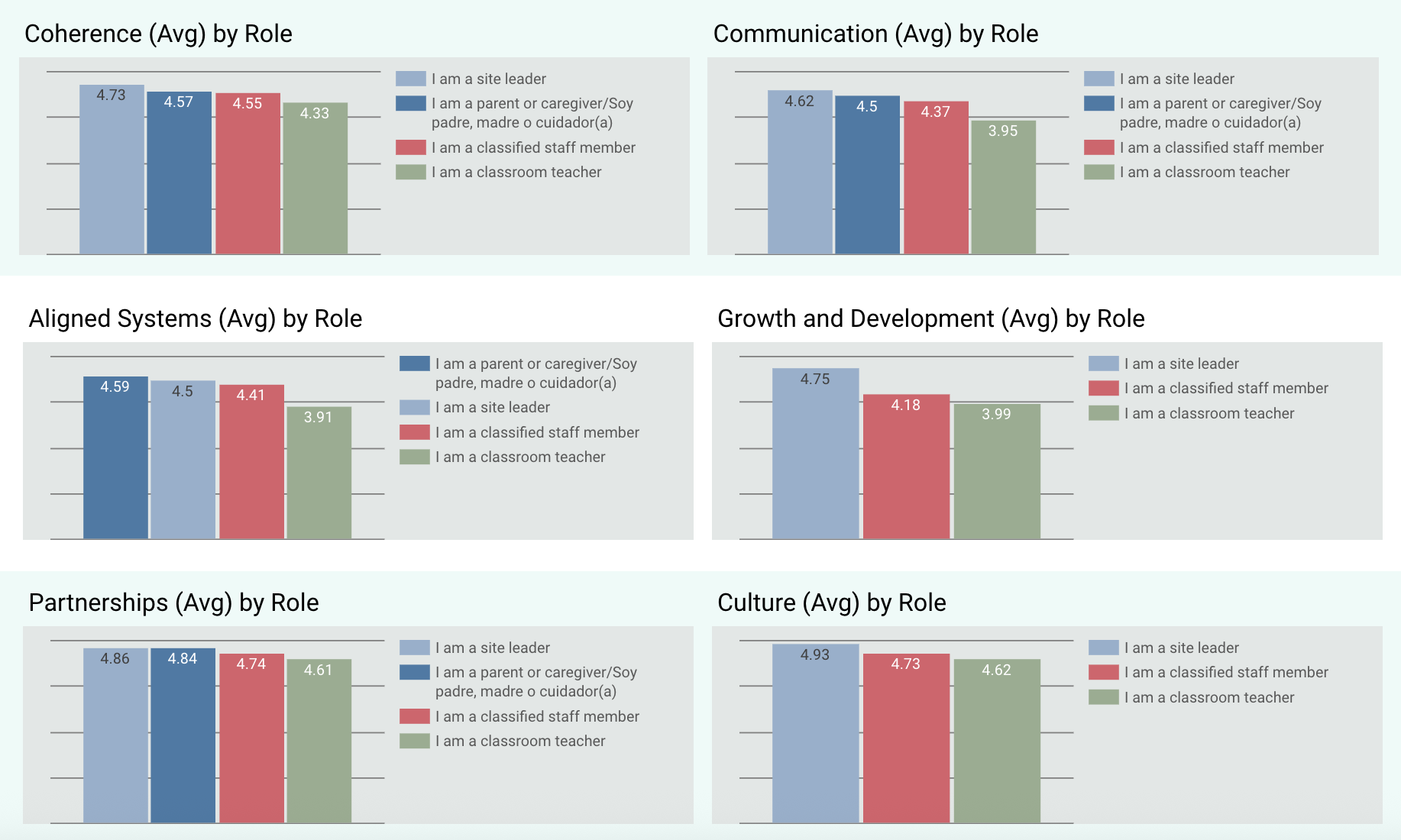
These are samples of data the Impact Survey Dashboard provides. They show a high-level view of learning experiences and enabling conditions across the district according to each audience: students, teachers, leaders, classified staff and families.
As one district entered its third year implementing its Framework for the Future, leaders analyzed data from the Impact Survey and identified some clear bright spots as in something that’s working really well in a learning community, and next steps.
- Bright Spot: Clear coherence exists across the district, so communication has been strong, especially about the new mission, vision and Portrait of a Learner.
- Opportunity: There is an opportunity to deepen learner-centered practices in the classroom to ensure the entire community is aware of the Learning Model and educators feel supported in implementing new learner-centered practices.
- Next Step: An important next step is supporting teachers to make it explicit to learners why they are learning something and when there are opportunities for setting goals, revising work and giving peers feedback.
These takeaways meaningfully deepen learner-centered practices, and the district plans to take the survey again next year to measure growth after taking the next steps identified above. Measuring this type of impact over time allows systems to see trends and growth, ensuring the Framework doesn’t just live in a document but throughout the system.
These impact surveys provide valuable data for Scorecards to track progress and impact of learner-centered efforts over time.
Alumni Survey
Once a school or district has defined its Portrait of a Learner, outlining the desired whole-learner competencies for all graduates, alumni perspectives become especially valuable. Alumni can speak to how well their learning experiences built these competencies, how relevant the skills are in life beyond high school, and what might further support learners after graduation.
During the 2024–2025 school year, we partnered with Digital Promise and five districts to co-design surveys that elevate alumni voices and translate data into action. More than 2,000 alumni responded in this first year alone, offering insights that district and school teams are using to reflect, learn, and strengthen support for future graduates.
 A sample question and response from a district alumni survey
A sample question and response from a district alumni survey
Small district teams, made up of leaders, educators, counselors, and in some districts, alumni and students, worked with Learner-Centered Collaborative to make meaning of their data together. These sessions led to rich conversations about how to better connect with alumni, celebrate bright spots with the community, and plan next steps that ensure learners leave school feeling ready for what comes next.
This year, Learner-Centered Collaborative will continue working with the pilot districts through a shared community of practice. Together, teams will take action based on their survey results, learn from one another, and help us refine the survey design and process to better serve partners and their learners—both current and future.
Better Together Project with National School District
In 2024, National School District, a PK–6 district in Southern California, received a state planning grant for Community Schools. With this grant, the district wanted to build upon a standard needs and assets assessment – leveraging the support of a research-practice partnership that would go beyond traditional metrics and lift diverse community voices.
Over the course of the year, Learner-Centered Collaborative worked with researchers from University of California, San Diego to:
- Conduct empathy interviews
- Create a customized survey, using validated constructs
- Analyze the data with district and site-based leaders
- Conduct additional interviews to better understand survey outcomes
Supported by this research-practice partnership, this comprehensive project provided the district with rich quantitative and qualitative data. The results revealed bright spots to celebrate alongside opportunities for growth.
Using validated survey constructs within a research-practice partnership, the district was able to encourage participation while honoring respondent confidentiality, deepen its data analysis, and align findings with its ongoing learner-centered transformation efforts.
Reports at both the district and site level, combined with structured opportunities to make meaning of the data, helped teams turn insights into action. For example, to foster coherence, deepen collective engagement, and bring greater clarity to desired instructional practices, the district launched a cross-functional Guiding Coalition in the summer of 2025 to co-create a unifying Learning Model.
By centering community voices through surveys and pairing research with practice, the district is building a stronger foundation for learner-centered transformation.
Lessons Learned
Surveys are only as powerful as their design, implementation, and follow-up. One of the biggest lessons we’ve learned is that having an external partner can increase both the credibility and reliability of the process.
By partnering with Learner-Centered Collaborative for surveys, you’ll not only create a safe, confidential space for honest feedback, but also ensure research design, validation, and analysis expertise that leads to credible data and meaningful action.
We’ve learned some additional lessons along the way that can support systems in ensuring surveys provide meaningful and actionable information:
- Pair Quantitative and Qualitative Data: Having quantitative data to compare growth over time is powerful when paired with empathy interviews and free-response questions that allow for a more nuanced understanding of the community’s perception and how to take next steps.
- Intentionally Plan for Distribution: Ensuring a broad audience responds to the survey means the data will be more meaningful, so plan on distributing the survey intentionally, ensuring it has the focus it deserves in classrooms, team meetings and in email communication.
- Make Time for Data Analysis and Meaningfully Use the Data: Using data analysis protocols and ensuring there is time to deeply digest and discuss the data with different audiences, identifying clear next steps, ensures the time spent on the surveys is meaningful.
Looking Ahead
Surveys are not a one-time activity; they are part of an ongoing cycle of listening, learning, and improving. Whether it’s a four-question micro-survey, a comprehensive impact study, or an alumni follow-up years after graduation, each survey offers a new window into how learner-centered practices are taking hold and where more support is needed.
At Learner-Centered Collaborative, we believe that listening to learners, educators, families, and communities is central to building learner-centered ecosystems where every learner thrives.
Surveys provide one of the most direct and powerful ways to do this. By designing them with care, analyzing them with rigor, and using the findings to guide next steps, we ensure that the vision of learner-centered education moves from aspiration to everyday practice.
Interested in doing an Impact Survey or a more customized survey? Let’s connect!
